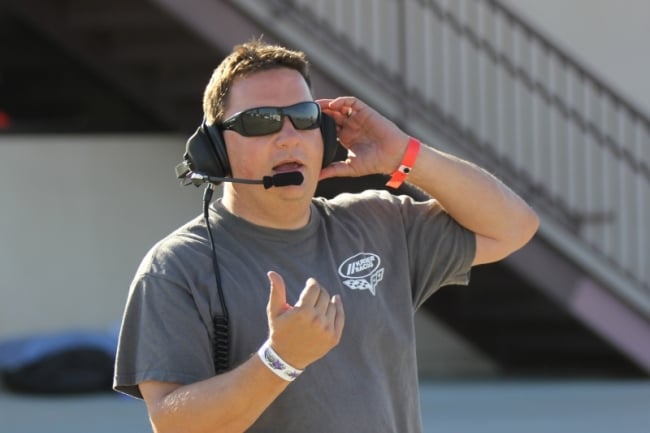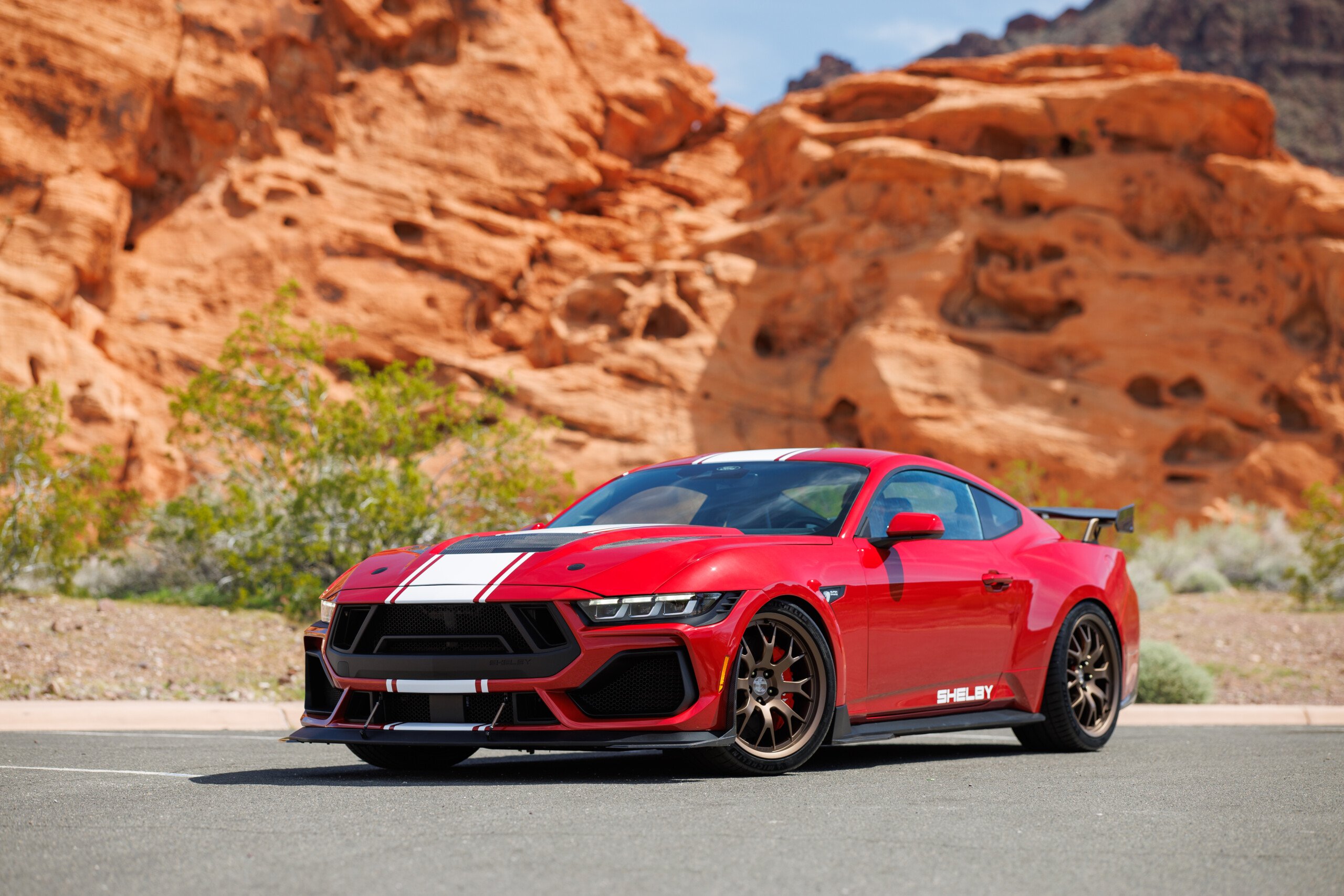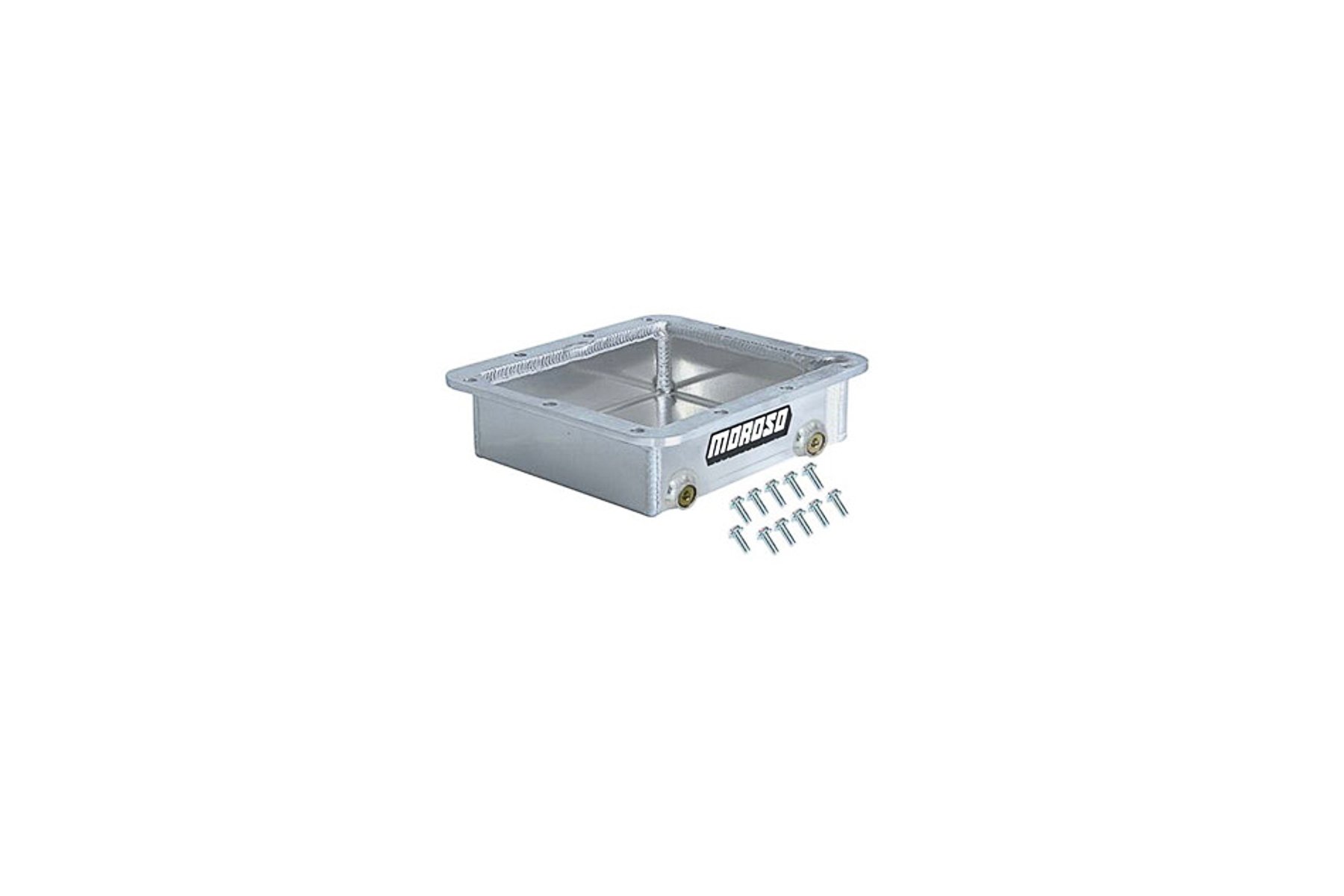The car community consists of a tight-knit group of like-minded enthusiasts who wish to share their passion with others. While a competitive spirit exists within these circles, nowhere does it shine more prevalently than in the racing side. As racers battle for lap-time supremacy and precision takeovers on track, they ironically help each other as if they were teammates. Ford Muscle’s Ivan Korda faced a similar situation when racing with friends.
The initial suspension on the 2013 Ford Mustang GT was not 100-percent stock. It was a mishmash of different aftermarket components thrown together. Choices were made in the past to save a few dollars, however for heavy track duty, that almost never works out.
As you can imagine, Ivan’s friends are also fans of the Blue Oval and campaign different generations of Mustangs on track. If you’ve been following along with Project Apex, then you have probably noticed Ivan ironing out the kinks in the New Edge’s suspension. This understanding extended out towards a fellow racer who was having issues with his 2013 Mustang GT. The rear of the car was unpredictable and could be scary when exiting corners. Once Ivan got underneath the Mustang he quickly realized one reason might have been the mismatch of parts that laid below the body.
Diagnosing The Issues
Suspension, if you want it to work correctly at the track, can be tricky to get right. Buying random parts from different sources and then bolting all of them on the car and hoping for a good result is not a recipe for success. Every component of a suspension (springs, shocks, bushings, sway bars, etc.) work in unison and need to be engineered together for a good result. What this 2013 Mustang GT was displaying on track resembled what it was displaying under the car: chaos.

Ivan felt problems in the rear of the Mustang and suspected it might have something to do with the upper differential mount to the floor pan of the Mustang. He removed it to find the bushing was shot.
With the slicks mounted on all four corners the rear end felt very unstable under hard acceleration, corner entry, and corner exit. Once you loaded the suspension up in a corner with the slick tires you could feel the flex in the factory panhard rod support. It caused a very spring-like feeling that would cause the rear tires to lose traction under heavy load.
After looking underneath the car we decided the biggest handling issues with the Mustang were mostly sourced at the rear of the car. We looked at what was still stock in the car and what had been replaced. The important thing to note about this car is that it is a track car, dedicated to running on road courses with sticky tires. These sticky tires provide additional load on suspensions during hard cornering.
The Mustang still retained the use of a stock upper control arm, stock upper control arm mount, and stock differential bushing. Once we removed the upper differential bushing, we found that the factory bushing was ripped on the differential side. The factory bracket is made of stamped steel, and while it is mounted onto the chassis well, when you install a set of very sticky tires this does create a point of deflection. That deflection, along with factory rubber upper control arm bushings and the upper differential bushing (which was not working) really amplified the instability in the rear of the Mustang.
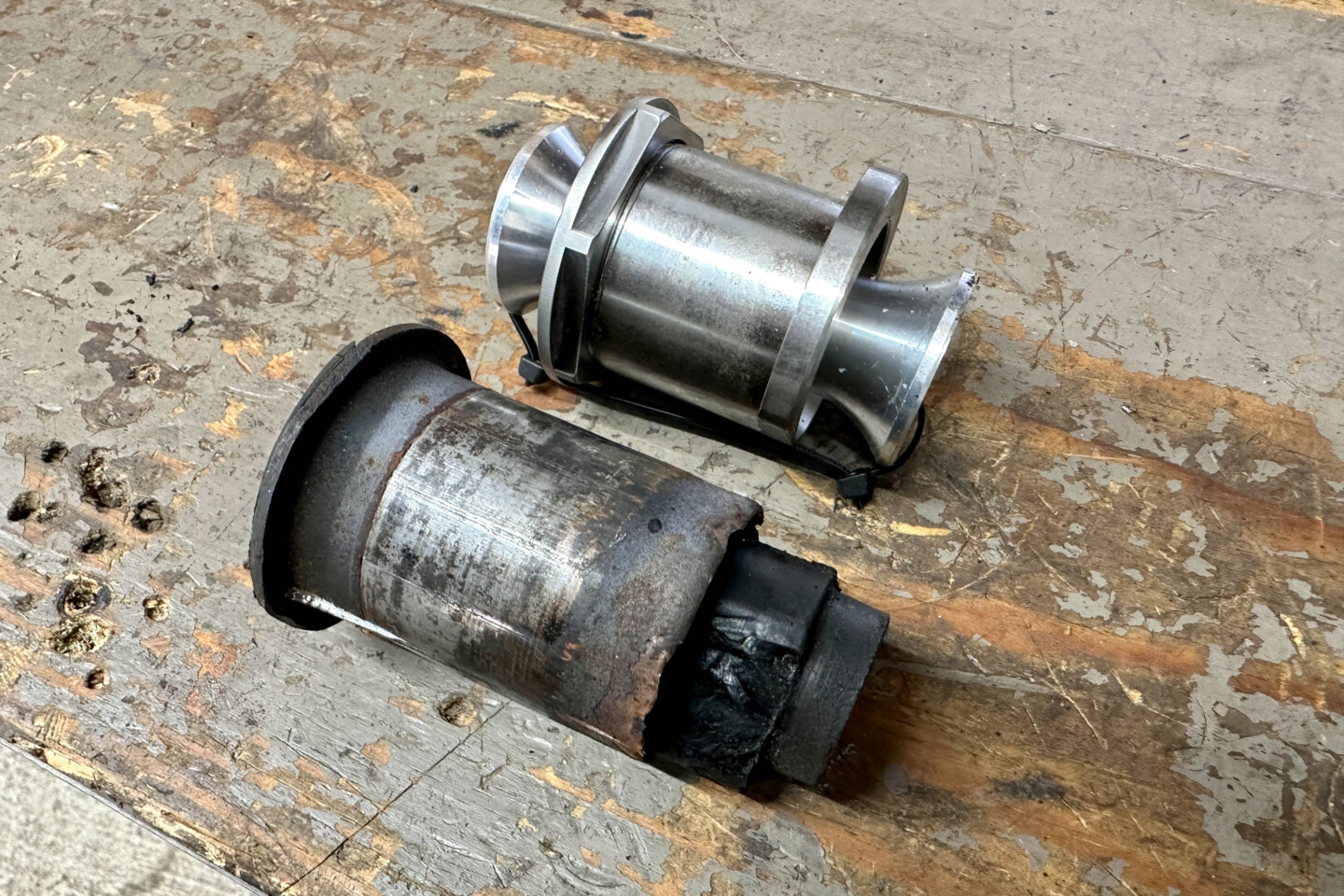
You can see the damaged OEM bushing from the top of the differential. Above it is a solid replacement piece from BMR Suspension. This was just one of many upgraded components from BMR Suspension.
BMR Suspension Brings A Solution
Instead of trying to piecemeal a fix here, or reengineer the rear of the Mustang by mixing and matching parts (an approach that hadn’t been successful thus far), we decided to trust an expert in the field of Mustang performance suspensions, BMR Suspension. We spoke to Allan Miller, President of BMR Suspension, and was given an encyclopedia of information on suspension deflection, metallurgy, and why it is important to use a system that has been designed to work as a whole as opposed to mixing and matching different parts.

A beautiful powder coated panhard rod, panhard mount, lower control arms (double adjustable), lower control arm mounts, upper control arm, upper control arm mount, and spherical bushings were all part of the upgrade from BMR Suspension.
After hearing what the 2013 Mustang GT was doing on the road course, Miller suggested we should replace the components in the rear of the car that were providing the most unwanted movement under load. “You want the suspension to be deflection-free and predictable,” Miller says. The first thing Alan suggested was replacing the upper control arm and upper control arm mount on the Mustang. “The stock Mustang upper control arm mount above the differential is made with stamped steel,” Alan details. “This is a huge point of deflection on the S197 Mustangs from 2005 to 2014.”

Here you can see the stamped steel control arm mount from the factory (in black) compared to the thick welded steel component from BMR Suspension (in red). The upper control arm from BMR Suspension is also adjustable.
Deflection is a bad thing because it is not predictable and causes instability in the chassis. With the BMR upper control arm mount, upper control arm, and spherical upper control arm bearing we would be eliminating the bind by rigidly mounting the upper link and using a spherical bearing allows the axle to articulate and work effectively.. This makes the car more predictable on track. BMR uses a massive 1-inch bearing on the UCA cup side with a 90,000-pound load rating. 90,000 pounds is overkill, but that speaks to BMR’s dedication for building high-quality parts.
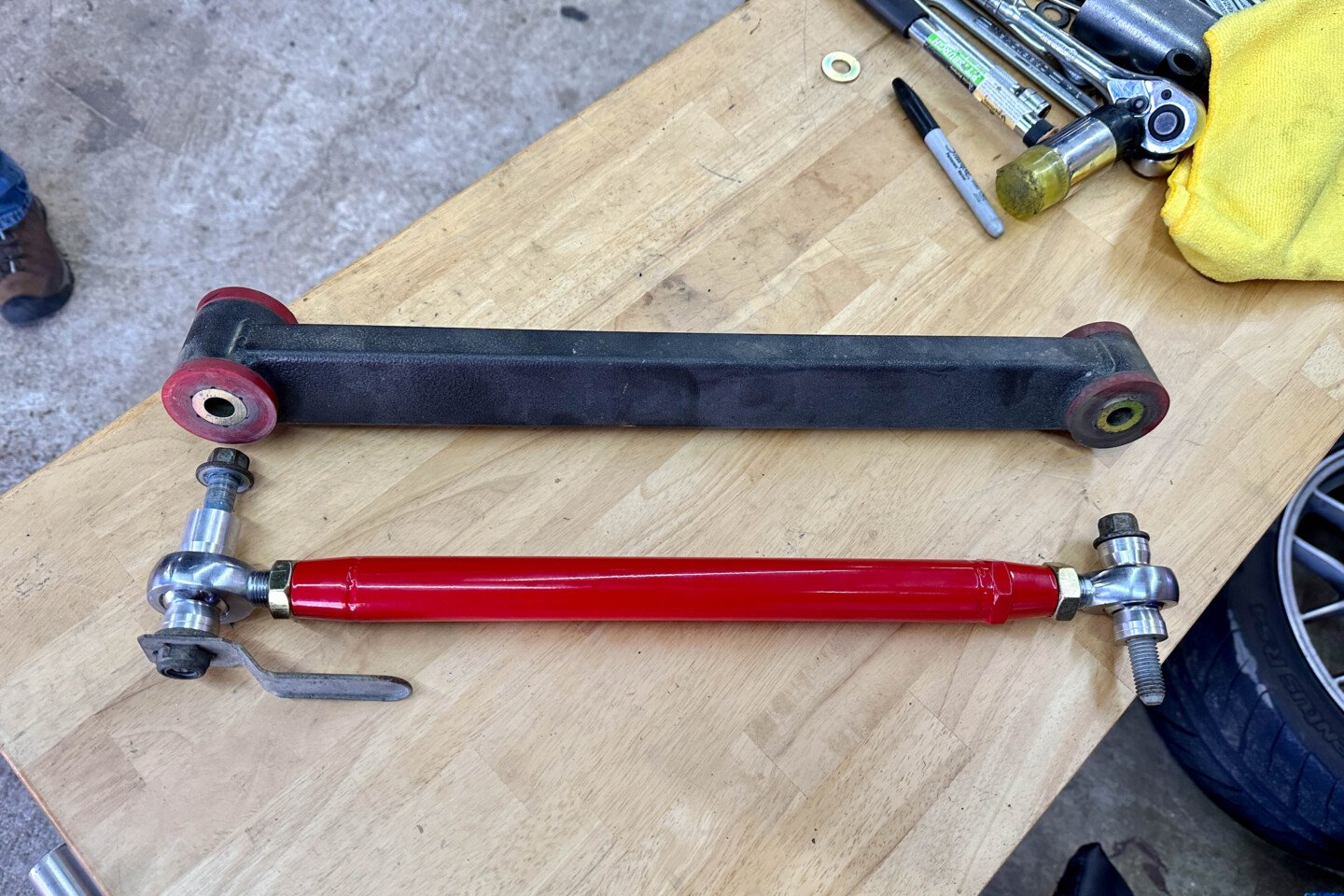
Polyurethane bushings (like those in the old black lower control arms) do flex less than OEM rubber bushings, but they still flex. Spherical bearings take away the squishy feeling you get from bushings.
A panhard rod is a suspension link that locates the lateral position of the rear axle housing, controlling side-to-side movement. Like the control arms, factory Mustang panhard rod supports are made from U-shaped stamped steel that allows excessive deflection under load.
BMR Suspension’s PHR007 Panhard rod support brace is made from boxed tubing for extra strength. The PHR007 adds strength to withstand increased lateral loads seen during cornering situations and hard launches. The mystery panhard rod that was on the car was replaced with the BMR chromoly double-adjustable unit to keep things tidy and consistent under the back of the Mustang.

Another common point of deflection on a Mustang is the lower control arm mount. BMR Suspension has a heavy-duty adjustable lower control arm mount that allows for changing the angle of the lower control arms, which can help with traction during launches and corner exit.
Running It Back Again
Once the BMR Suspension bits were bolted under the rear of the Mustang, we took the car back to Barber Motorsports Park. Running the car at the same track pre- and post-modifications is a smart way to determine if the upgrades were a success. In the case of the BMR Suspension’s upgrade, the jury was in: it was a success.
The rearend was so much more planted to the pavement. The rubbery feeling in the rear was completely gone and now it was 100-percent predictable. The car felt great on corner entry, mid, and exit. On throttle-out it would plant the tire and accelerate without drama. If the car oversteered it was only because we were overdriving the tire. However, the oversteer was very controllable and we could gather it up instantly. Driving this car now is really stress-free – it goes where you want it to go!

The components from BMR Suspension were manufactured in a way that they were easy to install, adjust and inspire a lot of confidence in behind the wheel.
For all of that hard work under the Mustang, not only was the car easier to drive, but it was also 1.6 seconds faster around Barber.
